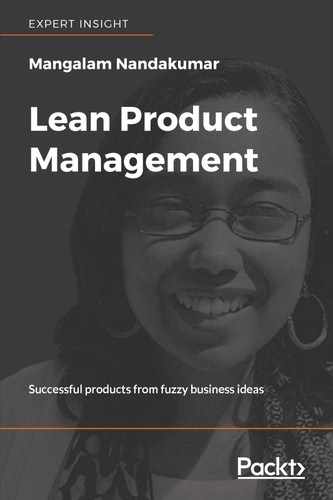In this chapter, we learned that effort estimation, or story sizing is useful as part of the implementation plan. However, in cases where our implementation is to proceed with a buy or partner approach (instead of a build), we don't need to estimate effort at all. Although we still need to get to the details about the cost of the implementation plan, based on the complexity, technology readiness, risks, dependencies, available skill sets (technical and supporting business functions), and resources (hardware and software). The intent of our implementation discussions should be about finding the smartest way to implement a feature idea. Estimating the effort should be one minor aspect of product implementation.
Teams should be ready to embrace effort estimations when needed and discard the need for estimations based on context and needs, rather than following a plan/process for the sake of following it. The emphasis should be on the interactions that happen when arriving at an implementation plan. Isn't this the essence of the "individuals and interactions over processes and tools," as stated in the Agile manifesto?
We have now figured out one aspect of our product building process and ensured that we are not bound by our internal processes and productivity metrics. Instead, we are motivated by internal and external constraints and bound by the outcomes, so that we can deliver an Impact Driven Product. While deciding the smartest way to deliver impact, product teams also need to understand what they must build versus what they can buy. Let's explore this aspect in the next chapter.
